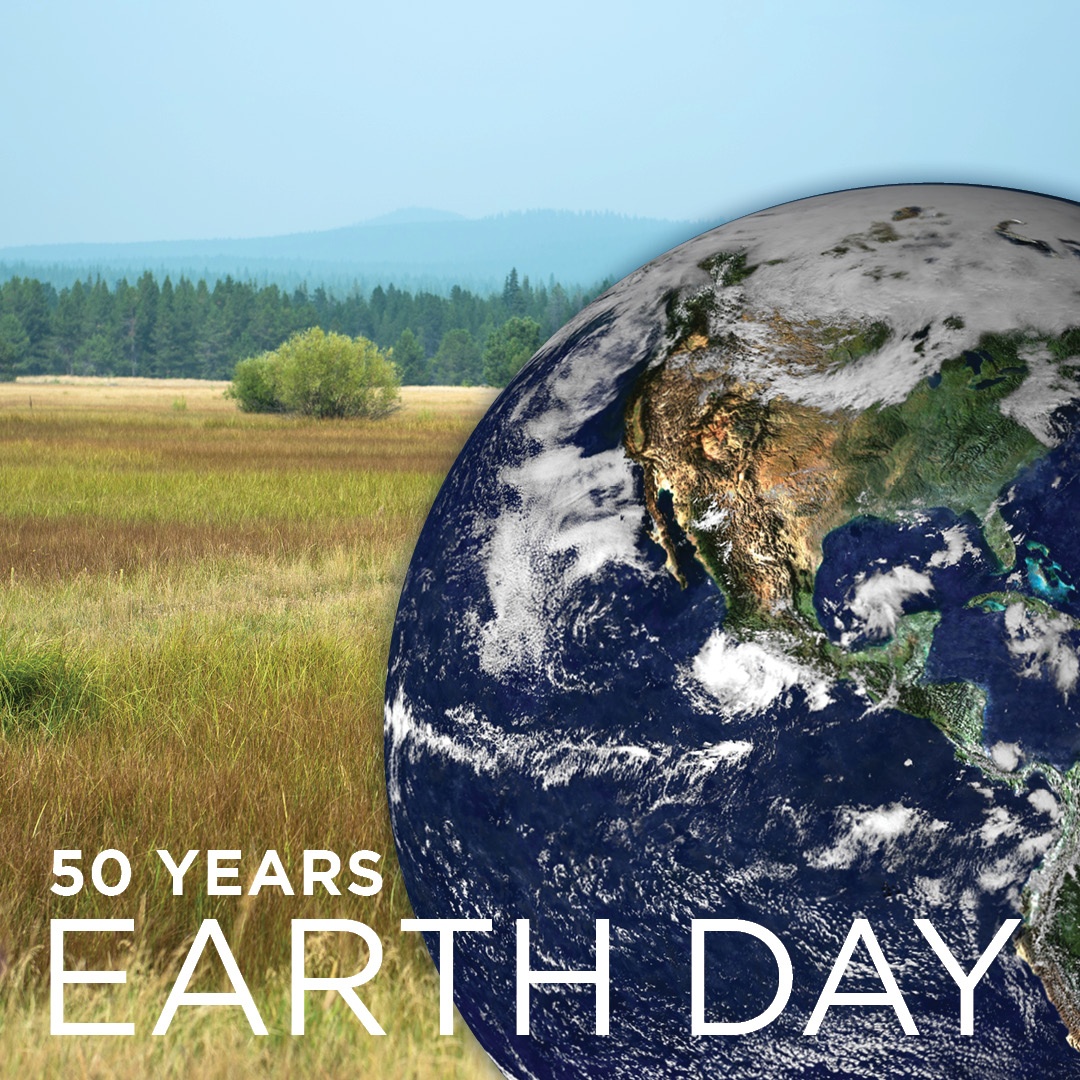By Amanda Accamando, Nature Center Manager
This year marks the 50th anniversary of Earth Day. This event is celebrated world-wide each year on April 22 and in its inaugural year in 1970, signaled a shift in world-wide mindsets and the birth of the modern environmental movement.
The first Earth Day was co-founded by Senator Gaylord Nelson of Wisconsin to bring the issue of the environment to the forefront of American politics and media. Through a remarkable grass roots effort, twenty million people attended events throughout the country on that day, launching what would be considered the ‘Environmental Decade’. However, Earth Day and the environmental movement did not spring out of nowhere; it was a reaction to a number of significant events and feelings of deep concern for the environment that were building through the 1960s. Rachel Carson, whose name is now synonymous with environmental activism, published Silent Spring in 1962 – a ground breaking book that revealed the dangers of pesticides. In 1969, an oil slick formed by decades of industrial waste pollution on the Cuyahoga River in Ohio caught fire. Hundreds of thousands of gallons of crude oil spilled into the Pacific Ocean off Santa Barbara in 1969 destroying beaches and habitat and killing wildlife. Threats of overpopulation, automobile emissions, industrial pollution, and deaths linked to smog also contributed to the environmental awakening of the 60s and 70s.
Collectively, these events provided the impetus of the environmental movement. Within five years major advances in legislation were made including the Endangered Species Act (1973), the Clean Water Act (1972), the Marine Mammal Protection Act (1972), the Safe Drinking Water Act (1974), and the Wild and Scenic Rivers Act (1968), just to name a few. Additionally, in 1970 the Environmental Protection Agency (EPA), Natural Resources Defense Council (1970) and the National Oceanic and Atmospheric Administration (NOAA) were established.
It’s no coincidence that the community of Sunriver and Sunriver Nature Center & Observatory (SNCO) are just a couple of years older than Earth Day. Sunriver, founded in 1968, was born of the same modern environmental movement. John Gray, the visionary and developer behind Sunriver envisioned an alternative to cities and suburbia – a place where people would rediscover nature and where nature could be built into the framework of the community. This concept was so important, that SNCO, originally named the Ecologium, was conceived and established as a fundamental unit of the Sunriver development.
For 52 years, Sunriver Nature Center & Observatory has embraced the ideals of Earth Day. Among our staff and volunteers, we often joke that Earth Day is every day for us. Similarly, for many of us that have chosen Central Oregon and Sunriver as our home, it is likely we have done so because we value the natural world and have a desire to share it with our families and preserve it for our children and grandchildren. That’s why today, in the light of climate change, our mission to inspire present and future generations to understand and cherish the natural world carries an even heavier responsibility. We find ourselves at another turning point in history. We have begun to view the impact of our personal actions through a global lens with enduring consequences. From the everyday choices we make in how we shop and travel, to the values we choose with our votes at local, regional and national scales – the impacts will be felt for generations to come.
I think we can all agree that one day a year is not enough for Earth Day. Transformative change for our planet will happen through the collective actions of billions of people, mobilized each and every day. The concept is daunting, but we know the result is positive and the impact is real.

